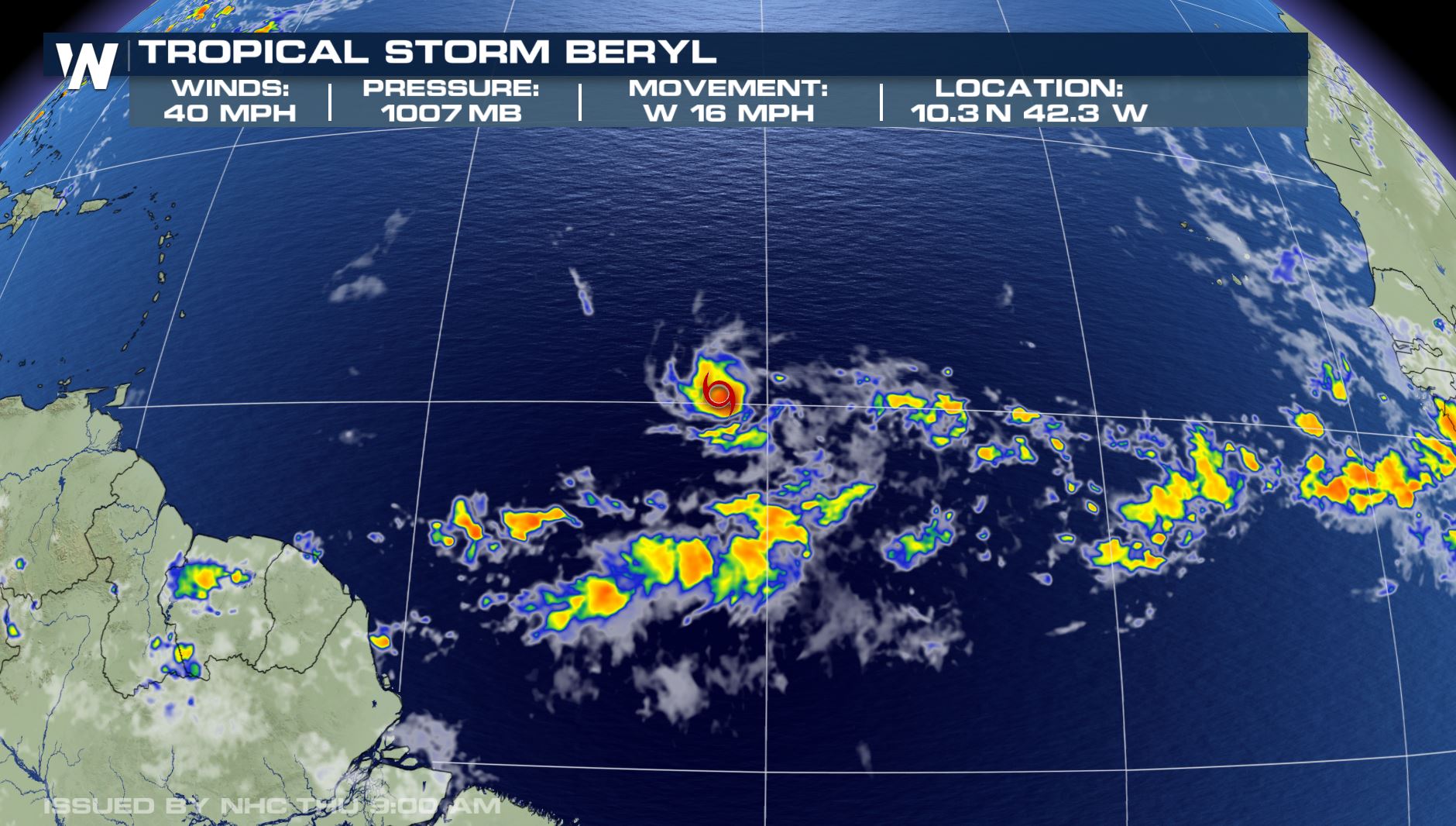Current Storm Beryl Status
Storm beryl path – As of [date and time], Tropical Storm Beryl is located at [coordinates], with maximum sustained winds of [wind speed] mph and a minimum central pressure of [pressure] mb.
Storm Beryl de on de move, and we de watchin’ it close. For the latest on where it goin’, check out the hurricane beryl prediction. We go keep you updated on Storm Beryl’s path so you can stay safe.
Beryl is moving [direction] at [speed] mph and is expected to continue on this track for the next 24 hours.
Storm Beryl, a tropical storm, is expected to pass near the Windward Islands this weekend. The storm is expected to bring heavy rainfall and strong winds to the region. Residents in the path of the storm are urged to take precautions and stay informed about the latest forecasts.
Historical Path of Storm Beryl, Storm beryl path
The following table shows the historical path of Storm Beryl, including dates, coordinates, and wind speeds:
| Date | Coordinates | Wind Speed (mph) |
|---|---|---|
| [date 1] | [coordinates 1] | [wind speed 1] |
| [date 2] | [coordinates 2] | [wind speed 2] |
| [date 3] | [coordinates 3] | [wind speed 3] |
Projected Storm Beryl Path

As of now, Storm Beryl is projected to move towards the northwest at a speed of 10 mph. The storm is expected to continue on this path for the next 24 hours before making a slight turn towards the northeast. This change in direction is due to the influence of a high-pressure system to the east of the storm.
The projected path of Storm Beryl is shown on the map below. The map also indicates the areas that are most likely to be affected by the storm.
Factors Influencing Beryl’s Movement
There are several factors that can influence the movement of a storm, including wind patterns, ocean currents, and the Coriolis effect. Wind patterns are the most important factor, as they can push or pull a storm in a particular direction. Ocean currents can also play a role, as they can help to steer a storm along a particular path. The Coriolis effect is a force that deflects objects moving in the Earth’s atmosphere to the right in the Northern Hemisphere and to the left in the Southern Hemisphere. This force can also influence the movement of a storm.
Potential Areas that may be Affected by the Storm
The areas that are most likely to be affected by Storm Beryl are those that are located along the projected path of the storm. These areas include the Bahamas, the Turks and Caicos Islands, and the southeastern coast of the United States. The storm is expected to bring heavy rain, strong winds, and flooding to these areas.
Storm Beryl Impact Analysis

Storm Beryl, a formidable force of nature, is poised to unleash its fury upon coastal regions. Its potent winds and torrential rains hold the potential to inflict widespread devastation, leaving behind a trail of destruction in its wake.
As Beryl barrels towards landfall, it carries with it the ominous threat of flooding, storm surge, and erosion, posing significant risks to coastal communities. The relentless pounding of waves, driven by relentless winds, can erode beaches and dunes, compromising their protective barriers and leaving them vulnerable to further damage.
Flooding
Inundation from storm surge and heavy rainfall is a primary concern during hurricanes. Storm surge, a wall of water pushed ashore by the storm’s winds, can penetrate deep inland, submerging low-lying areas and causing catastrophic flooding. Heavy rainfall, often accompanying hurricanes, can exacerbate flooding, saturating the ground and overwhelming drainage systems.
Flooding poses grave risks to human life, infrastructure, and property. It can damage buildings, disrupt transportation networks, and contaminate water supplies, posing health hazards. Moreover, flooding can isolate communities, hindering emergency response efforts and prolonging recovery.
Storm Surge
Storm surge, a formidable threat associated with hurricanes, is a wall of water that surges ashore, driven by the storm’s powerful winds. It can inundate coastal areas, causing widespread devastation. Storm surge can penetrate far inland, reaching areas that are not typically prone to flooding.
The height and extent of storm surge depend on various factors, including the intensity of the storm, the shape of the coastline, and the local topography. Storm surge can cause severe damage to buildings, infrastructure, and property, and it can also lead to loss of life.
Erosion
Erosion, the relentless wearing away of beaches and dunes by the pounding waves and strong winds, is a significant concern during hurricanes. Beaches and dunes serve as natural barriers, protecting coastal communities from flooding and storm surge. However, hurricanes can erode these barriers, weakening their protective capacity and increasing the vulnerability of coastal areas.
Erosion can damage buildings, infrastructure, and property located near the shoreline. It can also disrupt coastal ecosystems and habitats, affecting wildlife and fisheries.
Safety Tips and Evacuation Recommendations
In the face of an impending hurricane, it is crucial to prioritize safety and follow evacuation recommendations issued by local authorities. Here are some essential safety tips and evacuation guidelines:
- Stay informed about the storm’s track and intensity by monitoring weather updates and advisories.
- Secure your home and property by boarding up windows, securing loose objects, and bringing in outdoor furniture.
- Gather essential supplies, including non-perishable food, water, a first-aid kit, and medications.
- Identify evacuation routes and familiarize yourself with the designated shelters in your area.
- If evacuation is ordered, do not hesitate to leave. Evacuate to a safe location away from the storm’s path.
- Follow the instructions of local authorities and emergency responders.
By adhering to these safety tips and evacuation recommendations, individuals can minimize their risk and protect themselves and their loved ones from the potential impacts of Hurricane Beryl.
